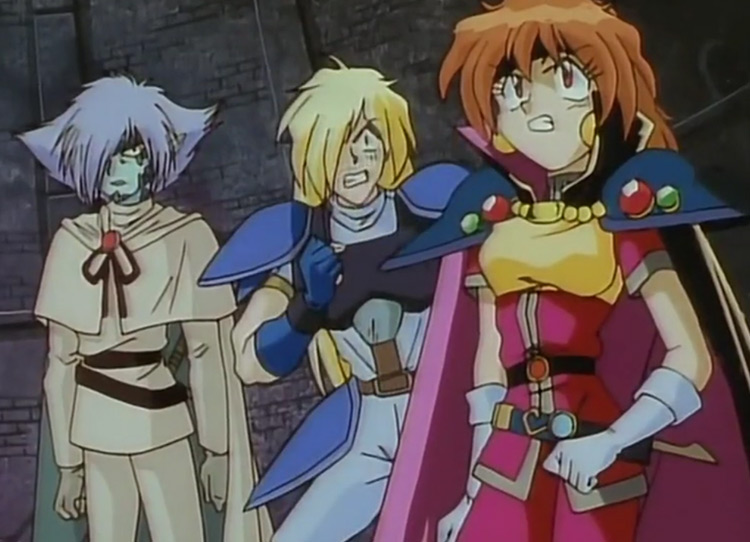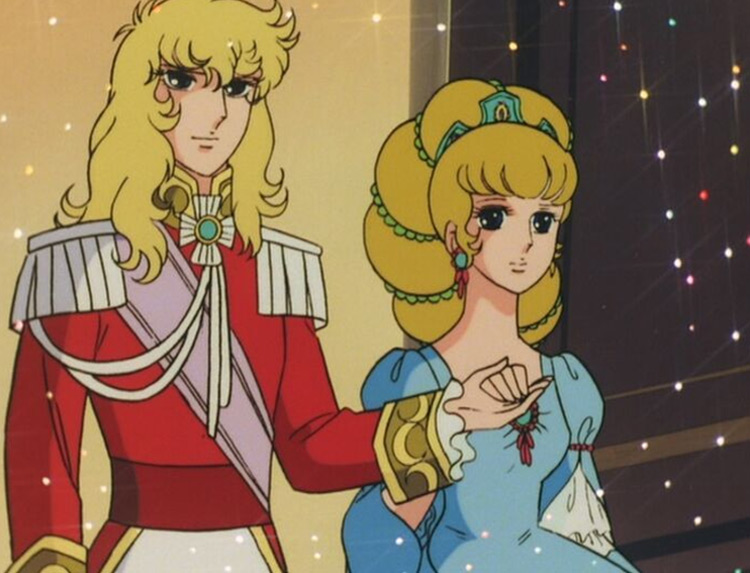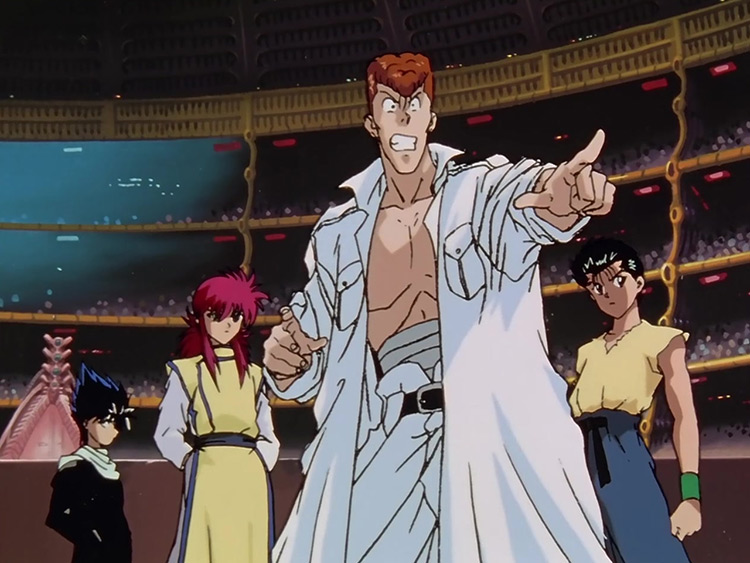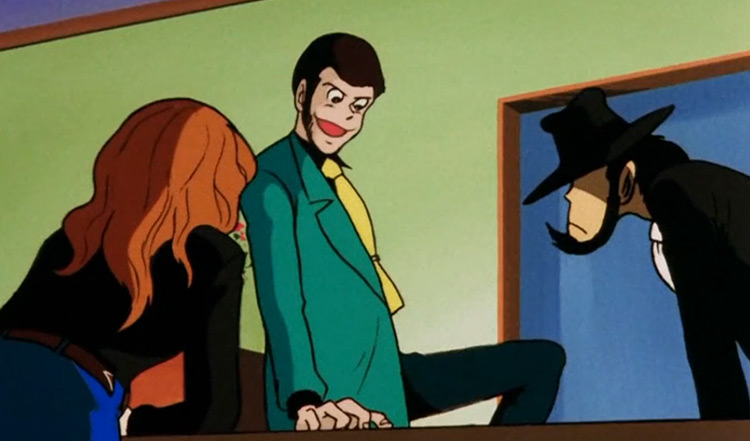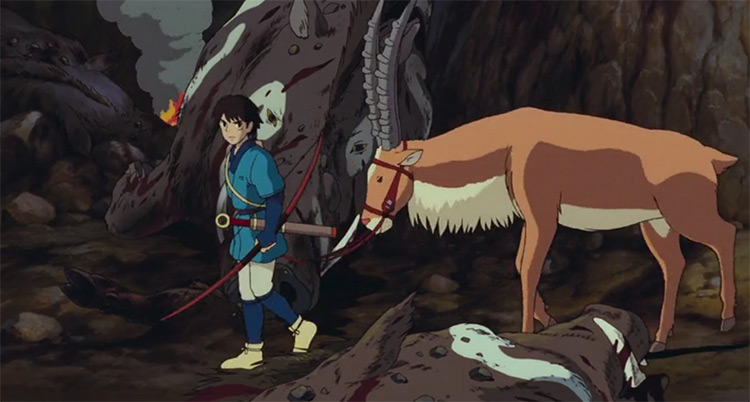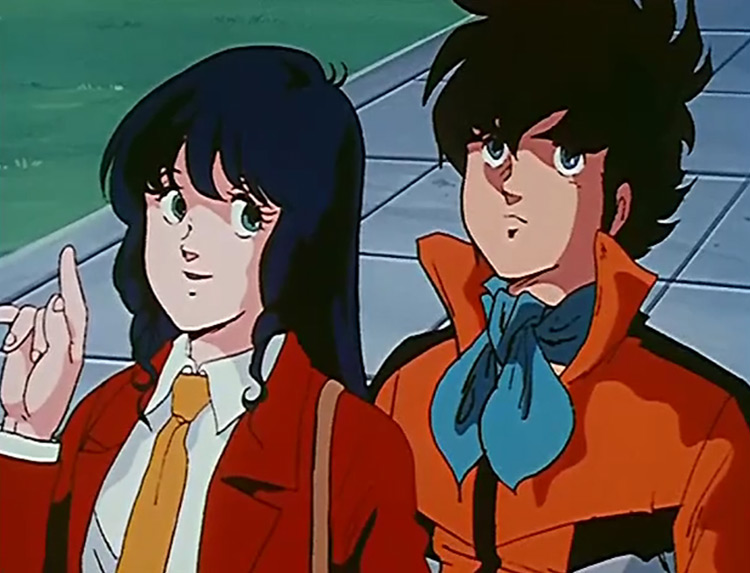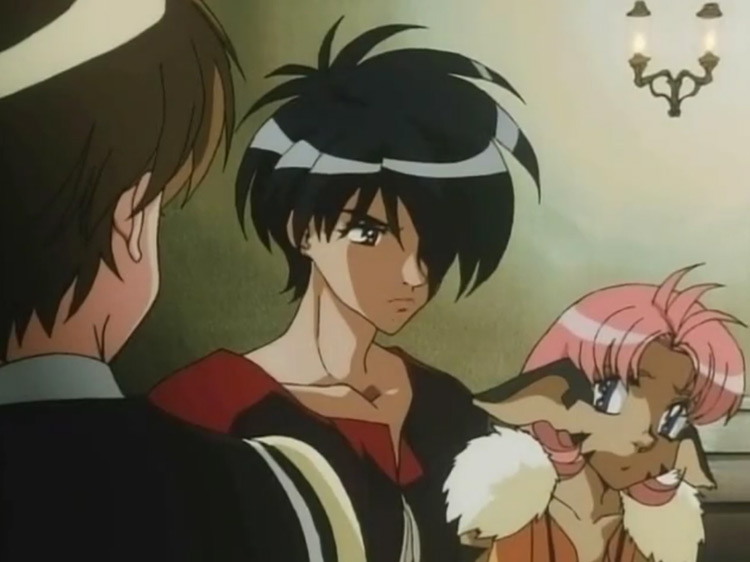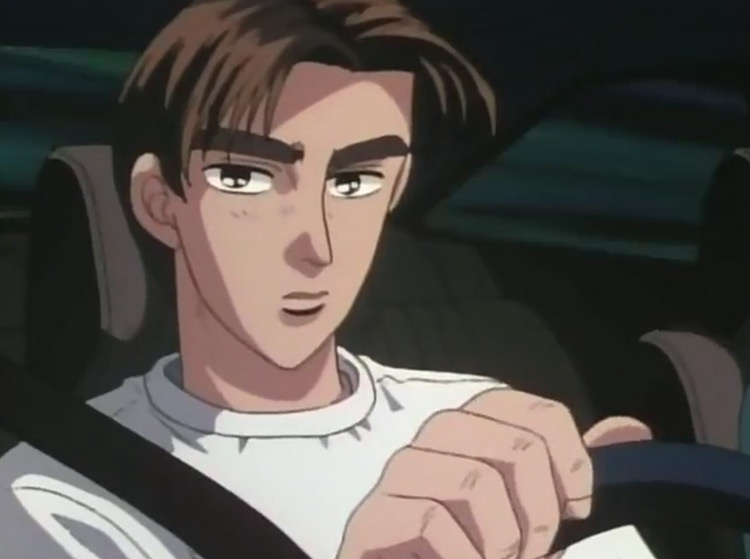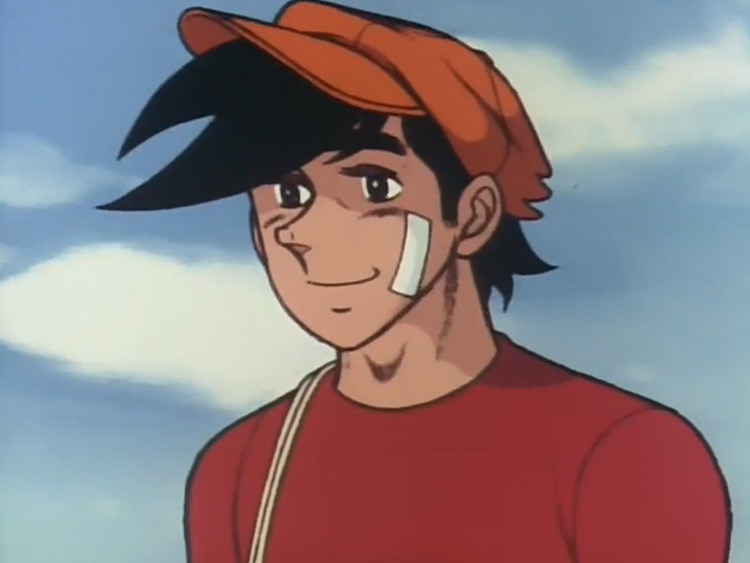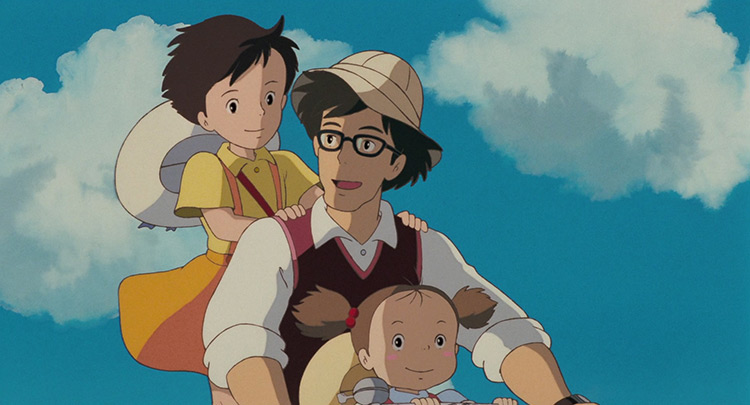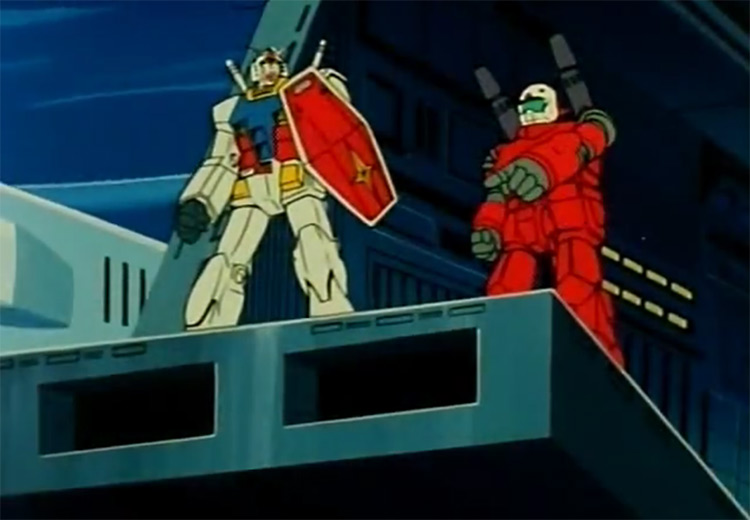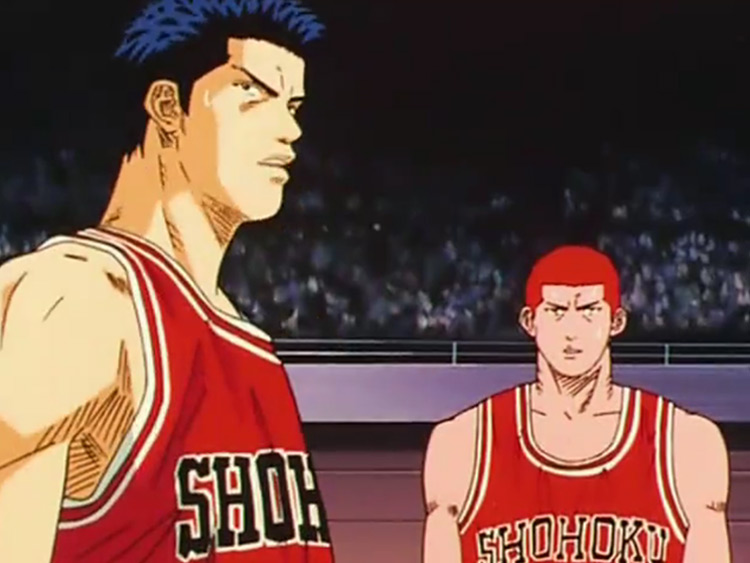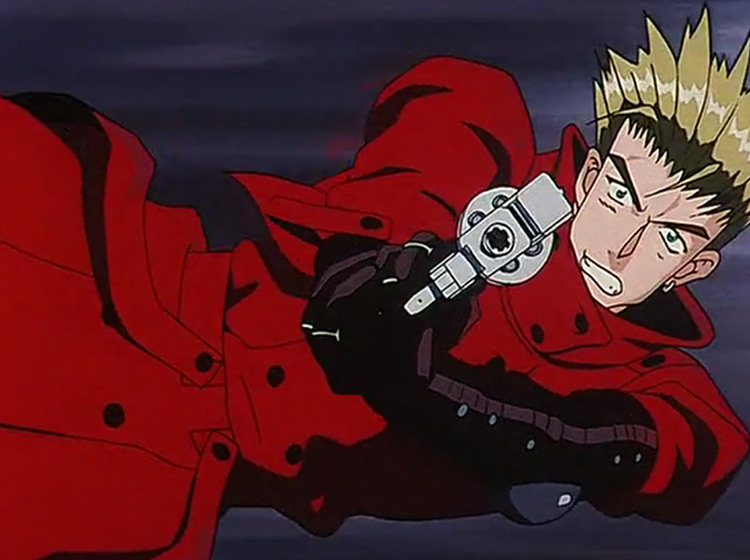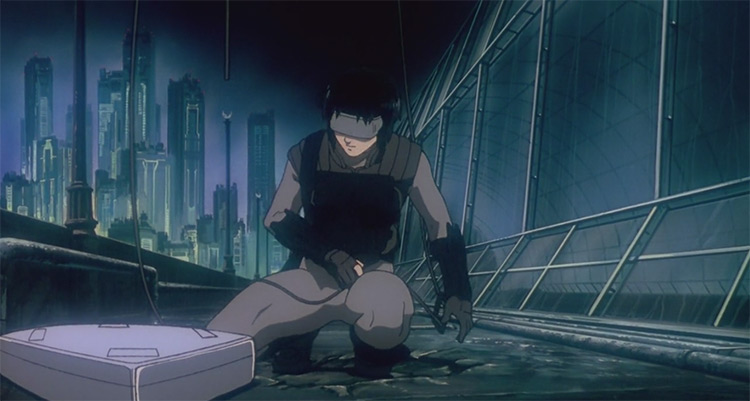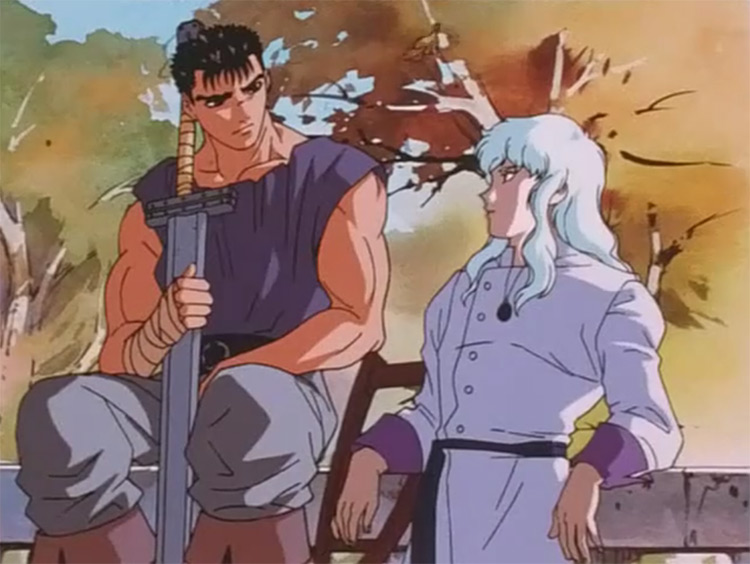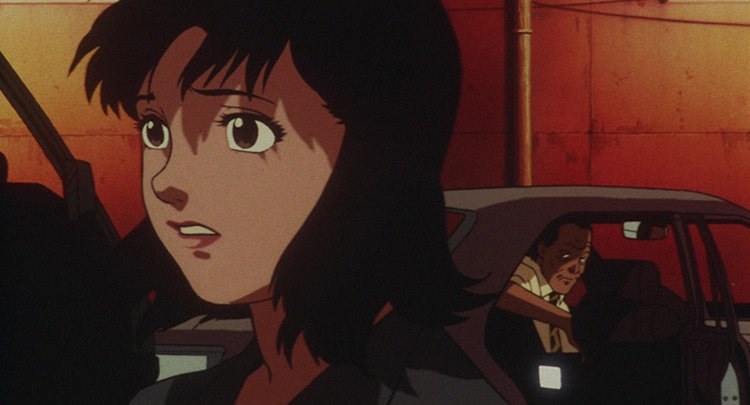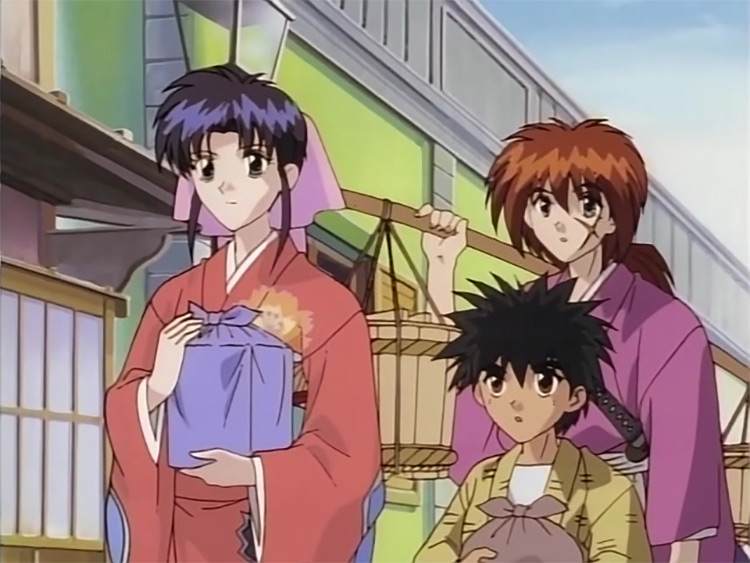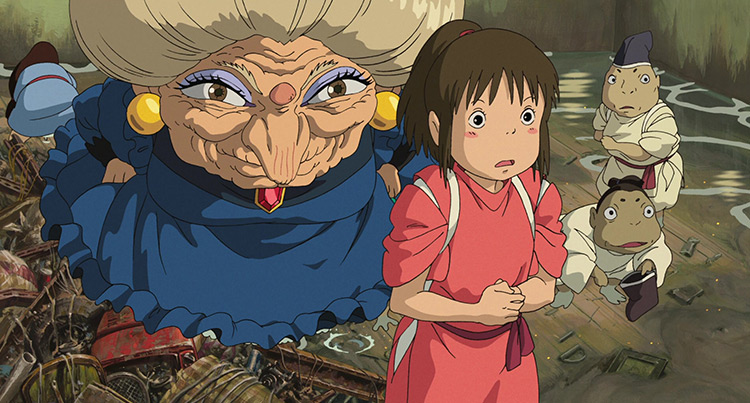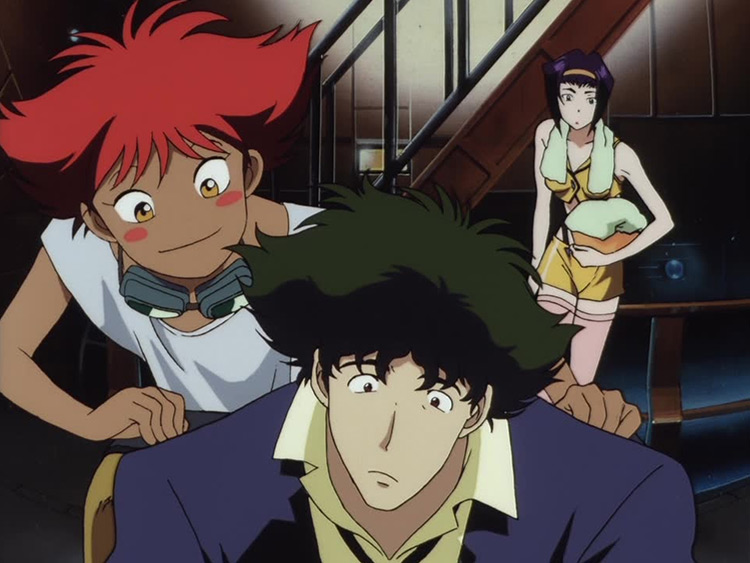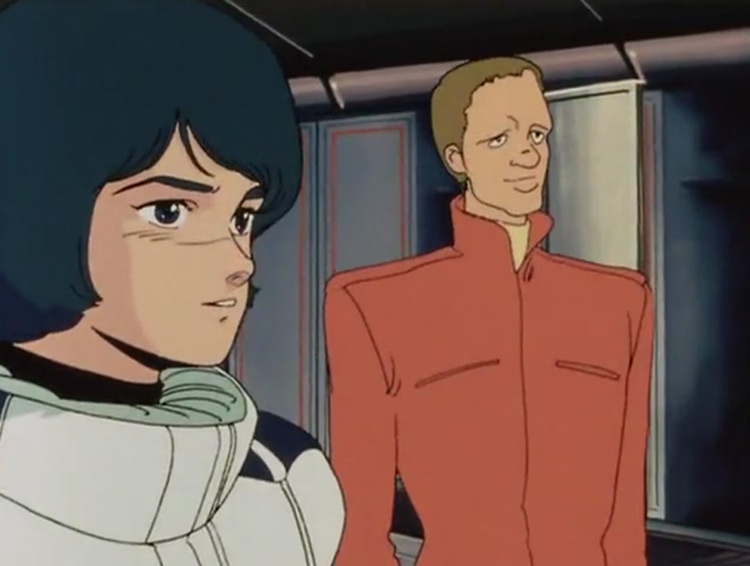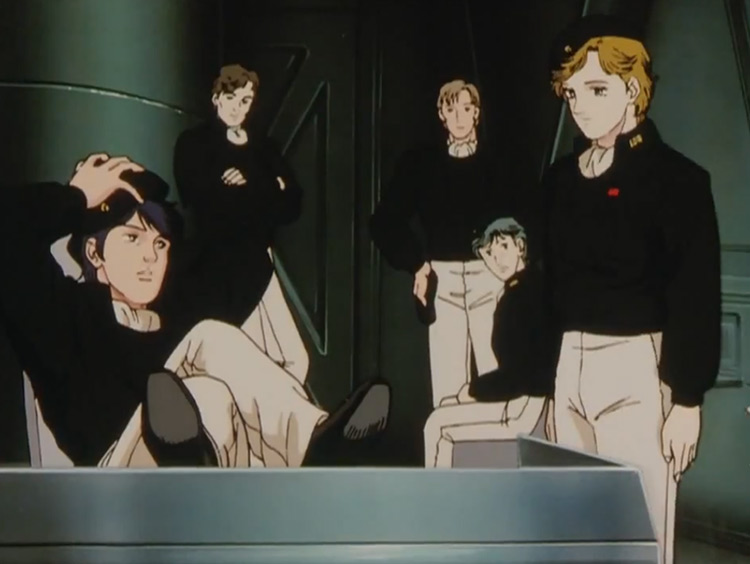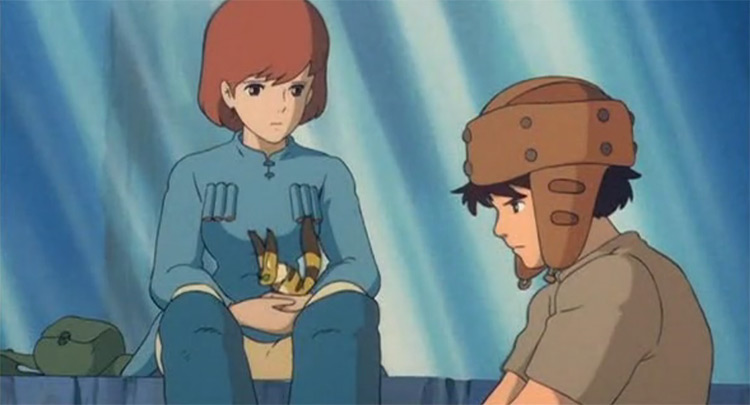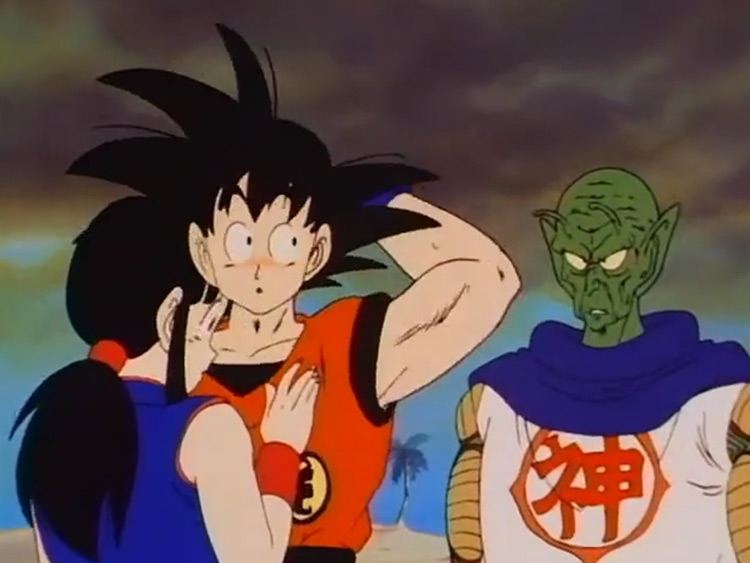So it’s understandable. Anime has evolved a lot since Mazinger Z (1972) and Mobile Suit Gundam (1979), thanks to increasingly sophisticated digital animation techniques. Newer anime are also written for more modern audiences. They’re easier to digest, and you don’t have to consider the cultural differences between us and past generations. Still, there are definitely some old-timey gems that every anime lover should watch. And these great classics from before the 2000s have stood the hardest test of all – the test of time.
25. Slayers (1995)
Genre: Fantasy, Adventure, Comedy Length: 78 Eps. Studio: E&G Films Some shows are just there to make you feel good, like an episode of Seinfeld or Scrubs. And that might just be what we get here, in anime form. Slayers follows Lina Inverse – a bad-ass roguish mage – and her band of adventurers on a fantasy journey straight out of someone’s drunk Dungeons & Dragons session. While the show does take itself seriously from time to time, it’s only to keep the main narrative relevant. The true appeal of Slayers is the lovable characters and goofy slapstick comedy.
24. The Rose of Versailles (1979)
Genre: Historical, Romance Length: 40 Eps. Studio: TMS Entertainment For Westerners, watching an artistic take on Japanese history in the form of anime is a common experience. It’s just anime for us! If you want to understand the true nature of these shows, you need to watch The Rose of Versailles. It follows Marie Antoinette – yes, that Marie Antoinette – and the leader of her Royal Guard, Oscar François de Jarjayes, from their arrival in Versailles to the last Queen of France’s untimely demise. The show is full of drama, romance, romantic tension, and even some comedy that’ll surely make you forget that this story ends beneath the falling blade of a guillotine.
23. Martian Successor Nadesico (1996)
Genre: Comedy, Mecha, Space Opera Length: 26 Eps. Studio: Xebec Martian Successor Nadesico nails the giant robot battles and lighthearted comedy in this series. It takes some of the best parts of classics like Macross and Gundam, but pumps it full of cute anime girls and more modern tropes. Well, modern for the 90s. It starts getting a bit more serious in the second half of its run, so it’s tough to tell whether Nadesico is a harem anime, a comedy, or a drama. But no matter what, one thing’s for sure – it’s a damn fun show.
22. Yu Yu Hakusho (1992)
Genre: Adventure, Martial Arts, Supernatural Length: 112 Eps. Studio: Pierrot Would you become a detective for ghostly affairs in exchange for resurrection? Yusuke Urameshi finds himself in such a situation after being struck by a car. His innate fighting spirit and street smarts are recognized by the son of the Afterlife’s ruler, and the rest is history. And this show gets progressively less mystery-oriented as it goes on, changing gears into full-blown fighting tournaments like you’d see in DBZ. Surprisingly, it manages to keep most people hooked regardless of this dramatic change in genre.
21. Lupin the Third (Part I) (1971)
Genre: Action, Comedy Length: 23 Eps. Studio: Tokyo Movie The adventures of Arsène Lupin can be seen as a mature anime version of Scooby-Doo – not so much for the mystery aspect, but for the energy of its colorful cast. They’re both shows that keep reinventing themselves season to season, changing with the times, and managing to stay relevant. But what makes Lupin the Third stand out for me is the fast-paced visual storytelling. Take that and couple it with the show’s top-quality animation, and it makes for an unforgettable experience.
20. Princess Mononoke (1999)
Genre: Fantasy, Aventure Length: 133 Min. Studio: Ghibli Emshi prince Ashitaka has lived his whole life amid his tribe. But after a curse takes root in his arm, he must leave his home on a quest to find a cure. The dichotomy between old and new, nature and civilization, is just as present in Princess Mononoke as it is in many other Ghibli films – but there’s also an exploration of the conflict between individual and community at the center of this story. The main antagonist, Lady Eboshi, can hardly be called a villain. She’s just standing too far at one edge of this central ideological problem, as it often happens in real life.
19. Super Dimension Fortress Macross (1982)
Genre: Mecha, Military Sci-Fi Length: 36 Eps. Studio: Artland & Tatsunoko Productions Macross was quite the influential anime thanks to its blend of exciting mecha combat, with a very emotional and human story. This well-rounded approach to the mecha genre attracted new audiences, while also enriching the experience for die-hard fans of giant robots. It helped pave the way for anime like Martian Successor Nadesico and Gundam Wing. What really makes Macross so magnetic, however, is how believable its characters are. We can really see how war affects each of them in a meaningful way, making us care more about the outcome of each battle.
18. The Vision of Escaflowne (1996)
Genre: Fantasy, Mecha, Romance Length: 26 Eps. Studio: Sunrise The Vision of Escaflowne is one of the most unique Mecha anime out there, thanks to its fantasy setting and unusual giant robot design, which takes inspiration from medieval armored knights. Sunrise put their expertise animating Gundam battles to good use in this show, giving us a masterful blend of epic giant robot combat and Shoujo romance. If you like well-written characters, strong female protagonists, and cool robots, Escaflowne is a must-watch. And since it was only made in the 90s, it does feel like this has kept its quality over the years.
17. Initial D (1998)
Genre: Action, Sports Length: 39 Eps. Studio: Gallop / Comet / Pastel Takumi Fujiwara is just another student working a part-time job and minding his own business – that is, until he gets behind the wheel of his Toyota AE86. This absolute madman learned how to drive fast and drift on the mountainous paths of Japan by delivering tofu for his father almost every day over several years. If you’ve ever played Need for Speed: Carbon, you know what to expect from this anime. It features some of the most exciting one-on-one races and crazy drifting techniques you can think of, and it’s profoundly enjoyable even if you don’t care much about high-octane entertainment.
16. Ashita no Joe (1970)
Genre: Action, Sports Length: 79 Eps. Studio: Mushi Production Most coming-of-age stories follow graduating high-school students and all kinds of individuals with bright futures ahead. Ashita no Joe is different. The show follows a young vagrant, Joe Yabuki, who discovers an interest in boxing while serving time in jail. After his release, he puts his all into becoming a professional boxer, overcoming hurdles like lacking formal education or any amount of money. The way he slowly improves and becomes a world-class boxer is inspiring. Still, the show also portrays the sport in a pretty realistic way. And it emphasizes the risks and health issues that come with the territory. It’s a sport for people who have nothing to lose and everything to gain, much like Joe.
15. My Neighbor Totoro (1988)
Genre: Fantasy Length: 86 min. Studio: Ghibli If you’ve gone to any store carrying anime merchandise, you know Totoro. This big adorable forest spirit is the face of Studio Ghibli, and an anime ambassador at this point. And it’s all thanks to the fantastic film My Neighbor Totoro. Set in post-war rural Japan, the film follows two local girls as they befriend several friendly forest spirits like the titular Totoro, among others. It’s not only a beautiful children’s film, but also a great introduction to anime, and the Ghibli works specifically. It also carries an environmentalist message that prompts us to re-think about our relationship with nature.
14. Mobile Suit Gundam (1979)
Genre: Mecha, Military Sci-Fi, Space Opera Length: 43 Eps. Studio: Sunrise The original Mobile Suit Gundam shined brightly for two main reasons: One, it introduced the world to Kenji Odawara’s unique mecha design that blew everything that had come before out of the water. On the other, it told a raw and realistic war story. Gundam doesn’t shy away from considering the consequences of war and its massive human cost – even if it spends most of its time following the exploits of epic war heroes like Amuro Ray and Char Aznable.
13. Slam Dunk (1994)
Genre: Comedy, Sports Length: 101 Eps. Studio: Toei Animation Based on the best-selling manga in history, Slam Dunk tells the story of young delinquent Hanamichi Sakuragi as he slowly straightens out and becomes focused on pursuing his dreams as a basketball player. Hanamichi’s story is deeply relatable for many struggling young men. Our main character initially joins the basketball team to impress a girl, only to find out what he needed wasn’t female company but a passion to pour his all into. And this isn’t just a great classic anime, but it’s also one of the best basketball animes out there.
12. Trigun (1998)
Genre: Action, Post-apocalyptic, Weird West Length: 26 Eps. Studio: Madhouse Trigun follows legendary gunman Vash the Stampede as he fights off bounty hunter after bounty hunter after the price on his head. Much like Kenshin in Samurai X, Vash seems lighthearted and peace-loving outside of combat. He doesn’t even remember the heinous acts that put the bounty on him. But once the shooting starts, you realize this man carries a bloodthirsty warrior deep inside. Other than the intriguing story and mysterious main character, the show shines for the characters that travel alongside Vash, like the gunner priest Nicholas D. Wolfwood and the insurance agent Meryl Stryfe.
11. Ghost in the Shell (1995)
Genre: Cyberpunk, Thriller Length: 82 Min. Studio: Production I.G. If you’re a fan of the Matrix, you can’t overlook the anime that inspired it (or at least offered a lot of similarities). Ghost in the Shell follows Motoko Kusanagi, a public safety operative with an interchangeable cyborg body. Through her, the show explores the consequences of a post-human world where the lines that separate us from machines have disappeared. The best part is how this series tackles these complex themes through visual storytelling, rather than just pretentious dialogue.
10. Berserk (1997)
Genre: Dark Fantasy, Sword & Sorcery Length: 25 Eps. Studio: Oriental Light and Magic Berserk isn’t for everybody. It’s not that it isn’t good – it’s fantastic. But the sheer cruelty of some characters and the inherent violence of the world of Berserk might be a bit too much for some viewers. You think Attack on Titan is bleak? The main character of Berserk was born from a hanged corpse, turned into a child soldier, abused by his brothers-in-arms, and had to kill his traitorous father figure before he even turned 10. It’s like someone made The Song of Ice and Fire: A Feast For Crows into anime.
9. Perfect Blue (1997)
Genre: Psychological, Thriller Length: 81 Min. Studio: Madhouse Along with Hayao Miyazaki, Satoshi Kon is one of the most influential directors in the anime industry. It seems like anything he works on turns out to be a masterpiece, and Perfect Blue is no exception. This film follows Mima Kirigoe, a former idol and aspiring actress, being harassed by a stalker who’s not too happy about her career change. Idols deal with offensive fans all the time. But this one will take it a step further and push Mima to the brink of losing her sanity. Like Kon’s other works – including Tokyo Godfathers and Paprika – this psycho-thriller plays with blurring the lines between fantasy and the mundane reality of modern Japan.
8. Rurouni Kenshin (Samurai X) (1996)
Genre: Adventure, Martial Arts, Romance Length: 95 Eps. Studio: Gallop / Deen Kenshin Himura is a happy-go-lucky wanderer who wastes no time helping the average Japanese citizen in the face of injustice. But his past as Hitokiri Battosai, the Sword-drawing Manslayer, won’t stop coming back to bite him. This incredible show takes place eleven years into the Meiji Era, when Japan was undergoing massive changes and letting go of its isolationist past to welcome an industrialized future. Much in the same way, Kenshin must slowly let go of everything that still binds him to his past assassin identity, to turn the page and become a defender of the people and simply a good person.
7. Spirited Away (2001)
Genre: Fantasy, Adventure, Coming-of-Age Length: 125 min. Studio: Ghibli Almost everyone from my generation has seen Spirited Away at least once. In fact, it held the record for the highest-grossing Japanese anime film since 2001, until Demon Slayer: Infinite Train overtook it in 2020. Through gorgeously animated visual storytelling, Spirited Away explores the consequences of our lousy relationship with nature. It’s only after Chihiro is forced into the service of nature spirits and works hard to clean Yubaba’s Bath House and its clients (like the iconic No-Face) that she manages to right the wrongs of her consumerist parents. Sound familiar?
6. Cowboy Bebop (1998)
Genre: Neo-noir, Space Western, Sci-Fi Length: 26 Eps. Studio: Sunrise I remember older anime-watchers around me were always singing Cowboy Bebop’s praises back when I was a teenager. After re-watching the series as an adult, I realized why it resonated so much with my older comrades. This dark and gritty show tells a mature story about a group of mismatched individuals who are trying to move forward, while dealing with their accumulated karma. Every action has consequences, and the past has a way of catching up to you. Of course, the animation is also fantastic and fluid. The character and setting design have a detailed old-school charm that you just won’t find in most modern shows.
5. Mobile Suit Zeta Gundam (1985)
Genre: Action, Mecha, Military Sci-Fi Length: 50 Eps. Studio: Sunrise Seven years after the One Year War, tensions run high in the Earth Federation. Their persecution of Zeon remnants – including innocent civilians – is nothing short of genocidal. Among the chaos, a group of rebels led by Quattro Bajeena – AKA Char Aznable in sunglasses – rises to defend the weak and oppose this fascistic government. Other than presenting one of the coolest portrayals of Gundam’s best character, MS Zeta Gundam shines for its pessimistic realism. War teaches people to kill. And it can quickly become a habit.
4. Legend of the Galactic Heroes (1988)
Genre: Military Sci-Fi, Space Opera Length: 110 Eps. Studio: Kitty Film Legend of the Galactic heroes really needs a remake. This anime space opera tells one of the best stories in the medium. And really, the writing is incredible, the characters are absolutely fantastic, and the soundtrack is inspiring – but the art really hasn’t aged that well (we’re talking about the 80s here). Still, this anime could be a low-quality Flash animation and it’d still be worth watching. In a way, it’s like reading a good book. It stays with you long after the last episode is over, and may prompt you to reconsider some things. It’s an anime about the harsh truths of life, the cost of war, and the turbulent human connections made in times of strife.
3. Nausicaä of the Valley of the Wind (1984)
Genre: Fantasy Length: 117 Min. Studio: Topcraft I watched most of Ghibli’s most renowned movies before I finally decided to check out Nausicaä, based on a manga by Hayao Miyazaki. Like most of Miyazaki’s work, it tackles themes like war and environmentalism. Not only does it show us how war could wipe out everything we know, but it reminds us that even then, we’d probably just rise from our ashes to fight with sticks and stones. Nausicaä herself (and the main antagonist Kushana) are fantastic characters presented by Miyazaki as powerful and commanding, which subverted gender stereotypes at the time, and still holds up to this day.
2. Dragon Ball (1986)
Genre: Fantasy, Adventure, Martial Arts Length: 153 Eps. Studio: Toei Animation DBZ features plenty of cool fights and cosmic-level threats for Goku to beat to a pulp, all while his hair gets progressively wilder. But the original Dragon Ball anime is just pure creativity. From the Emperor Pilaf saga onward, this 30+ year old anime progressively builds up a whimsical world where kids that turn into giant apes co-exist with high-tech tools you can carry in a tiny capsule. The premise written out sounds kinda ridiculous, now that I’m thinking about it… But really, everything about this anime is colorful and fresh. And that’s just as true in the 2020s as it was in the 1980s.
1. Neon Genesis Evangelion (1995)
Genre: Psychological, Mecha Length: 26 Eps. Studio: Gainax I’ve watched plenty of amazing mecha anime with mature stories like Gundam and Code Geass. And still, there’s nothing quite like Hideaki Anno’s Neon Genesis Evangelion when it comes to pairing cool giant robots with a deep thought-provoking story. Shinji’s struggles with women, friendships, family, and his own trauma are deeply relatable. This comes from Anno’s study of Sigmund Freud’s and Karl Jung’s work on psychoanalysis while writing the series. We all need to get in the robot at some point. It’s the nature of life to face challenges that seem bigger than ourselves. And sometimes, you need to wear the skin of a beast to fight off the real monsters.
